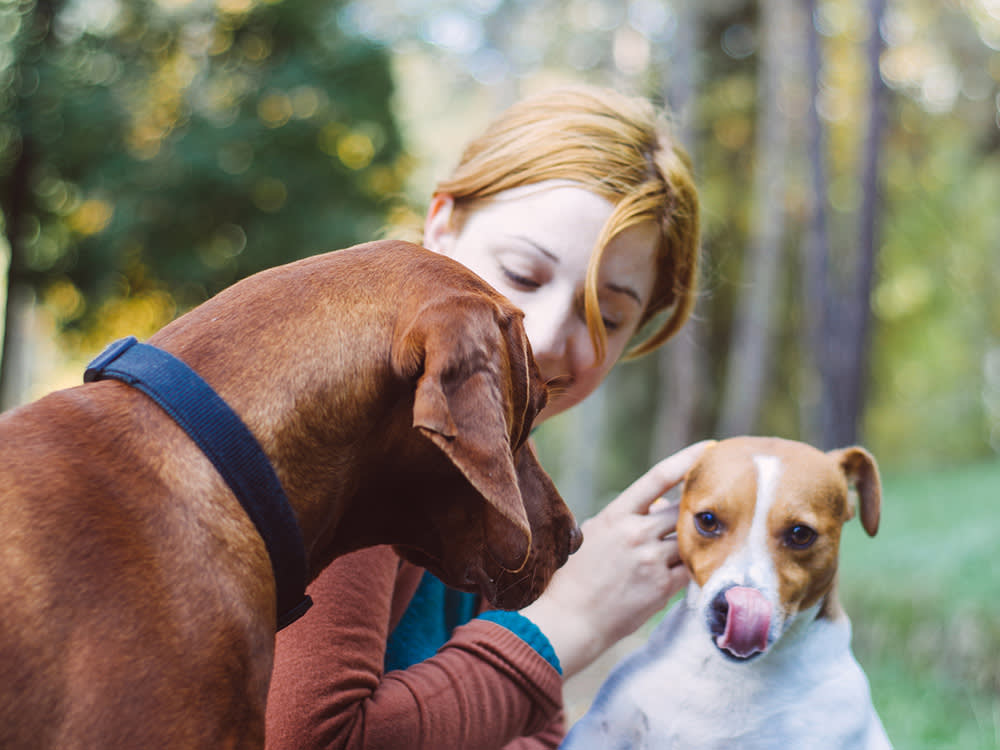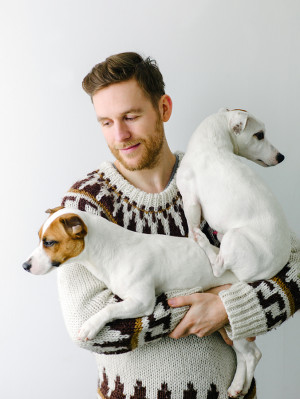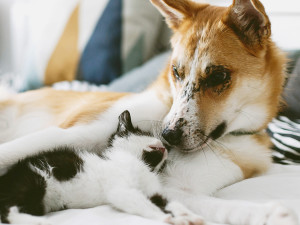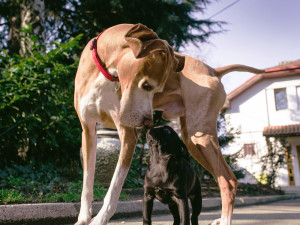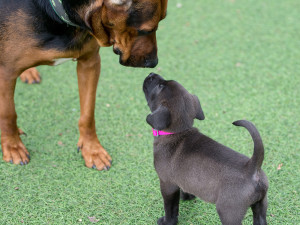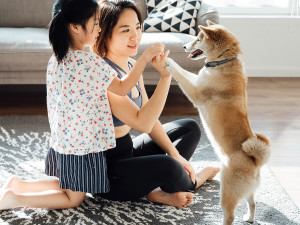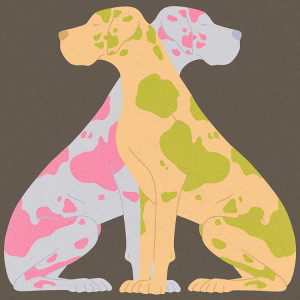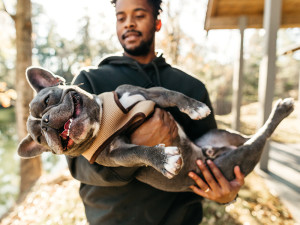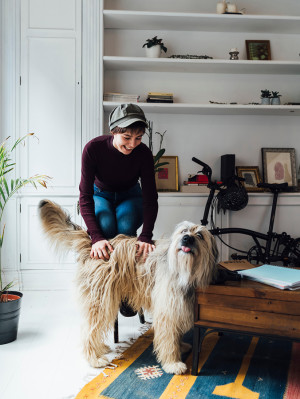Can Your Dog Get Jealous?
Turns out, they can experience pretty complex emotions.
Dogs rely on humans to meet their physical and emotional needs. We are their people and their best friends, so it only makes sense that when someone else wants our attention, they might not love that. As an animal behaviorist and dog trainer, I definitely believe that dogs experience jealousy.
Over the years, researchopens in new tab has provided ample evidence in support of this claim. The most likely rivals for a dog are the other dogs in the household, which is why scientists studied dogs’ behavior when guardians paid attention to their other dogs. In a 2018 studyopens in new tab published in Animal Cognition, they did not find compelling evidence that dogs exhibited jealous behaviors, but small sample sizes and high individual variability may have masked any effects that do exist.
Trick question: All dogs are perfect! But find out which type is the best fit for you.
Researching Jealousy in Dogs
A 2021 studyopens in new tab in the journal Psychological Science investigated jealousy in dogs in situations in which the dogs can’t see their rival. Researchers studied 18 dogs and their reactions to their parents’ interactions. The dogs in the study observed their parents in close proximity to a realistic fake dog. Then, a barrier was placed to block the dog’s view of the fake dog, at which point the parent began to pet the fake dog behind the barrier. (The dogs being studied could still see the humans.) The dogs were also observers when the experiment was repeated, this time, with the humans sitting by a fleece tube and petting that tube after the barrier went up.
In the trials with the tube, the fake dog was also present and next to the human, but the human did not pay any attention to the dog. Researchers used the presence of the fake dog to tease apart the influence of the presence of the fake dog and the interaction between them and the parent.
How much do you spend on your pet per year?
To do this, they measured the force with which the dogs pulled toward their parents in each situation. Pulling harder in the direction of the person was considered a sign of jealousy. (Studies of jealousy in young children also measure the effort these children make to approach their parents when the parent’s attention is on another activity.)
Based on the increased force the dogs had while pulling toward their parents when they were petting the fake dog, the researchers claim to have found evidence of jealous behavior in dogs. The dogs pulled hardest when the parents interacted with a perceived social rival (another dog), with an average force of more than twice than what they used when their parents were petting a fleece cylinder. Additionally, the dogs reacted with strong force when their human was interacting with another (fake) dog, even if they couldn’t see that interaction.
Mixed Results
The researchers concluded that dogs acted jealously when their parents gave attention to another dog, even if that other dog was not visible. They also concluded that the dogs did not act jealous when their parent gave attention to an inanimate object, nor when their humans were near another dog but not paying any attention to that dog. Finally, they determined that the dogs could have a reaction to the interaction without actually seeing it.
In my opinion, this study has issues that raise questions about the conclusions. The only behavioral measure taken was the force of the pulling, which can also signal that the dogs simply want to join the interaction. Many dogs enjoy socializing with both people and dogs, and those dogs are likely to pull toward their human when another dog is engaging with that person. It’s also possible that the pulling simply reflected attention-seeking behavior, which does not necessarily mean the dog was experiencing jealousy.
I have two issues with this research paper. One is the presentation of jealousy in dogs as a ground-breaking idea, and the other is the failure of this paper to demonstrate jealousy in dogs. I don’t think this study (or some of the earlier work on the same subject) provides compelling evidence of jealousy in dogs. But there are studiesopens in new tab that have been more convincing, and I certainly don’t think it makes sense to view jealousy as uniquely human.
This study investigates canine jealousy, which is great, but it does not adequately eliminate other explanations for the behavior observed in the study. (It does, however, make a reasonable case that dogs can form mental representations of interactions between their parent and a dog who is out of sight.)
The Takeaway
The bottom line: Dogs do experience jealousy. As author and behaviorist Patricia B. McConnell, PhD writes in the book For the Love of a Dog: Understanding Emotion in You and Your Best Friendopens in new tab: “Jealousy doesn’t strike me as a particularly complicated emotion. I see tension and aggression between dogs on a weekly basis that seem little different from behavior that we wouldn’t hesitate to call jealousy in young, preverbal children. It all seems to come down to ‘You’ve got it, I don’t, and I’m not happy about that.’ It’s unimaginable to me that they don’t have some sense of missing out on something good. Surely your dog knows when you’re petting another dog that he’s not being petted himself.”
